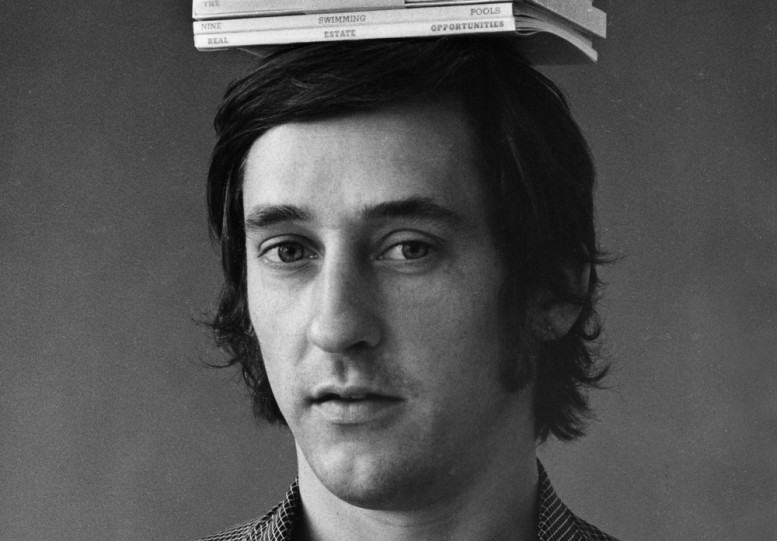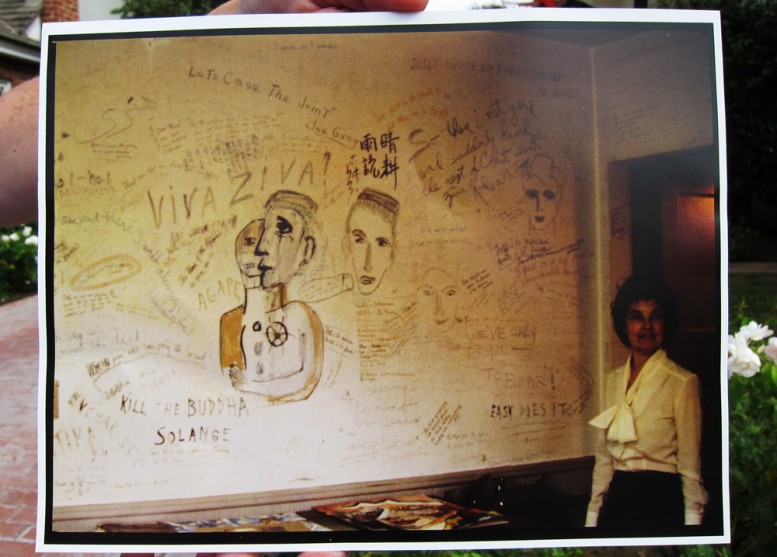Stand Still Like a Hummingbird
 Jerry McMillan, Ed Ruscha with six of his books on his head, 1970
Jerry McMillan, Ed Ruscha with six of his books on his head, 1970
David Zwirner gallery in New York presents Stand Still like the Hummingbird, an exhibition curated by Bellatrix Hubert in the gallery’s 525 and 533 spaces. It takes its title from a collection of short stories and essays by American writer Henry Miller, published in 1962. Known equally for his mysticism and dark humor, Miller proposed the idea of “flying backwards, standing still like a hummingbird” as a lighthearted antidote to the frantic pace of modern society. The exhibition also embraces the paradox in the appropriation of its title – the hummingbird only appears still because of the rapidity of its wings – and gathers a selection of paintings, sculptures, and videos by artists who engage with contradictions, impossibilities, and the absurd. The exhibition also explores the notion of "understated gestures and formal restraint" - finding its historical starting point in Marcel Duchamp's Comb and other readymades artworks that came to influence a century of art making. Works in the show include Forty-two postcards by On Kawara, stamped by the time he got up on a given day and simply titled I Got Up(1968-1976), a collection of Ed Ruscha’s photobooks (1964-1978), works by Bernd and Hilla Becher, Francis Alÿs, Marcel Duchamp, and more. Stand Still Like a Hummingbird will be on view from June 28 to August 3, 2012 at David Zwirner gallery, 525 West 19th Street, New York.
Henry Miller's Last Residence on Earth
 Pacific Palisades, California, photography by Oliver Maxwell Kupper
Pacific Palisades, California, photography by Oliver Maxwell Kupper
"The frantic desire to Live, to live at any cost, is not a result of the life rhythm in us, but of the death rhythm." Henry Miller
Daddy's Girl: The Erotica of Anaïs Nin
Anaïs Nin by Carl Van Vechten 1949
February 21 marked the 108th birthday of Anaïs Nin, a controversial figure perhaps best known for her romantic dalliances with prominent figures such as Henry Miller, Otto Rank, Lawrence Durrell, Antonin Artaud and Gore Vidal. She worked as a psychoanalyst, wrote fiction, trained as a dancer, appeared in films by Maya Daren and Kenneth Anger, had an affair with her father, pianist and composer Joaquin Nin, and eventually married Rupert Pole sixteen years her junior when she was forty-four (she was already married to banker and experimental filmmaker Hugh Guiler at the time.) All of this and more she documents in her diaries, which span more than sixty years. It is, perhaps, not surprising then that Nin also dabbled in erotica; collections of her stories, Little Birds and Delta of Venus, are now considered some of the finest erotica ever written.
The books were not published until the late 70s, after Nin succumbed to a three-year battle with cancer. The stories themselves were written much earlier, in the 1940s when Henry Miller and Nin were both living in Paris. Miller, after publishing Tropic of Cancer, was approached by a third party to write pornographic stories for an anonymous collector at the rate of $1 per page. Soon, many of his artist and writer friends, including Caresse Crosby, Robert Duncan, and Nin were churning out what the latter termed “an abundance of perverse felicities,” encouraged by Miller to take advantage of this unforeseen source of income.
Anaïs Nin’s Little Birds and Delta of Venus, born out of what was part joke, part moneymaking venture, are erotica in the truest sense of the word. The stories are rich, vivid, beautifully written and populated by character types who embody the multi-hued spectrum of human desire. They deftly and, at times, humorously explore the various ways in which sexual hunger is felt, expressed, and consummated and the reader is often as surprised by the events that unfold as the characters are themselves. The settings, scenarios, and figures in Nin’s stories are largely informed by her own life and enriched and transformed by her considerable powers of invention and unique poetic voice.
Little Birds and Delta of Venus can both be purchased at Amazon.com.
Text by Anna Wittel


